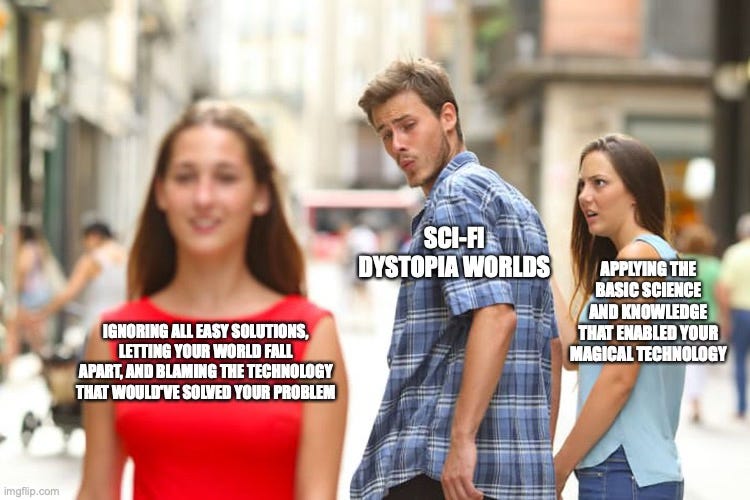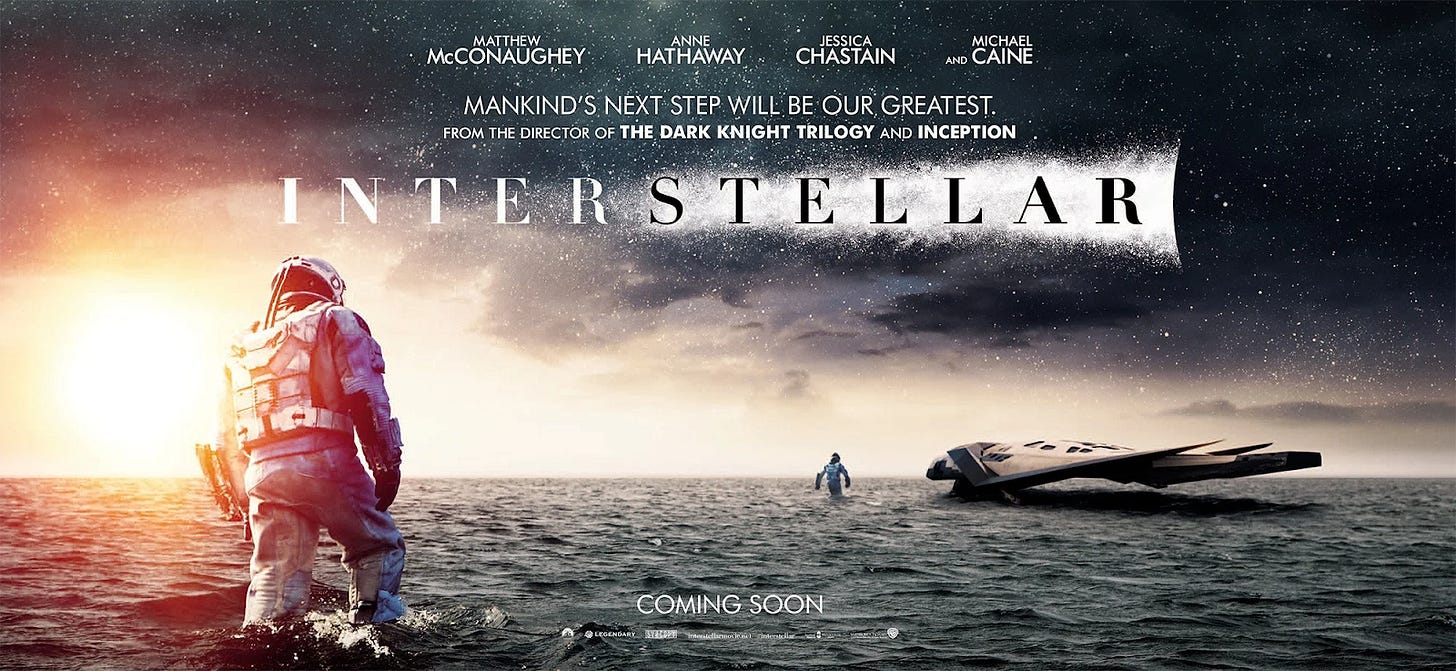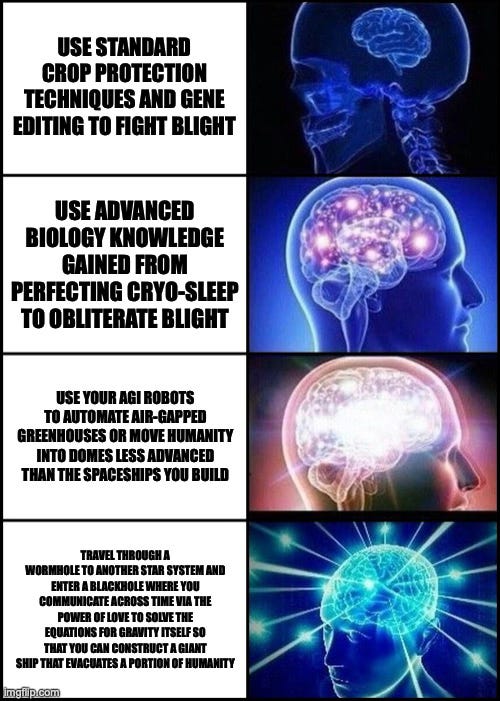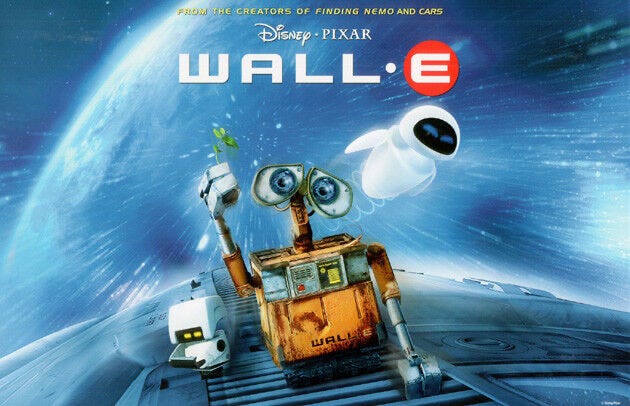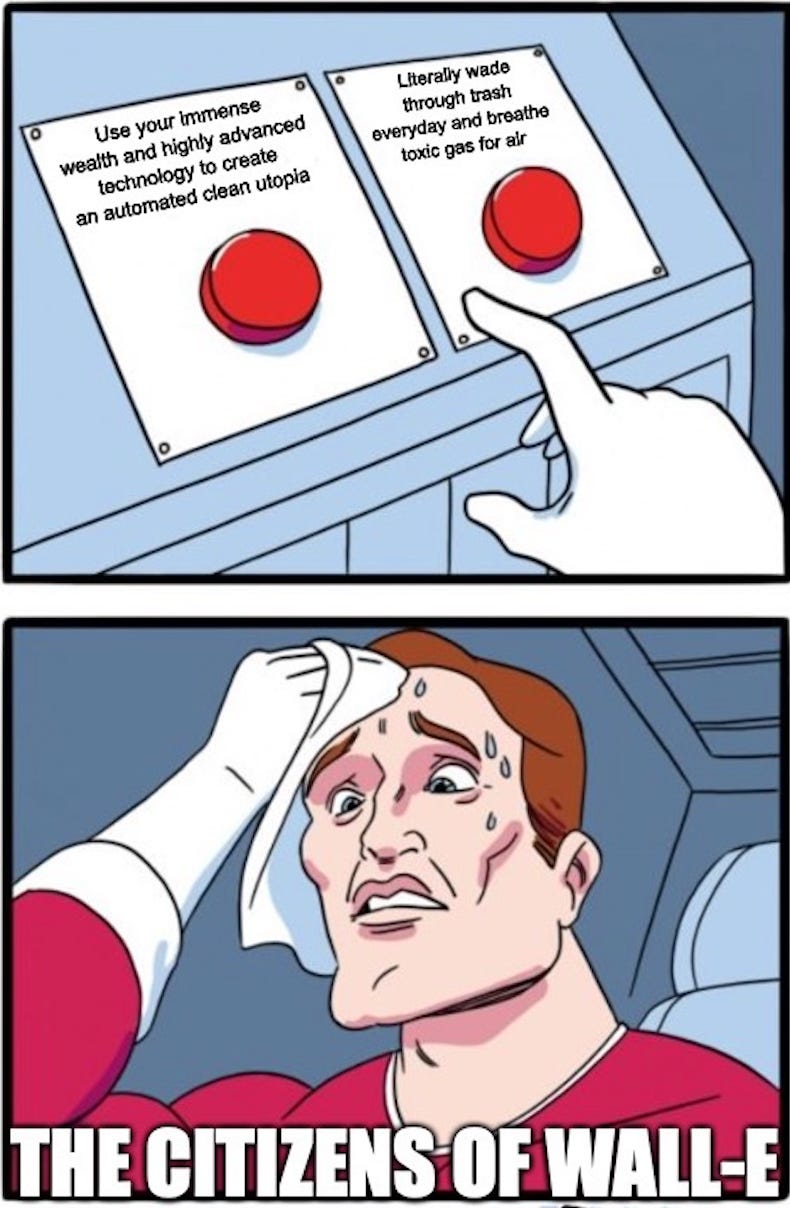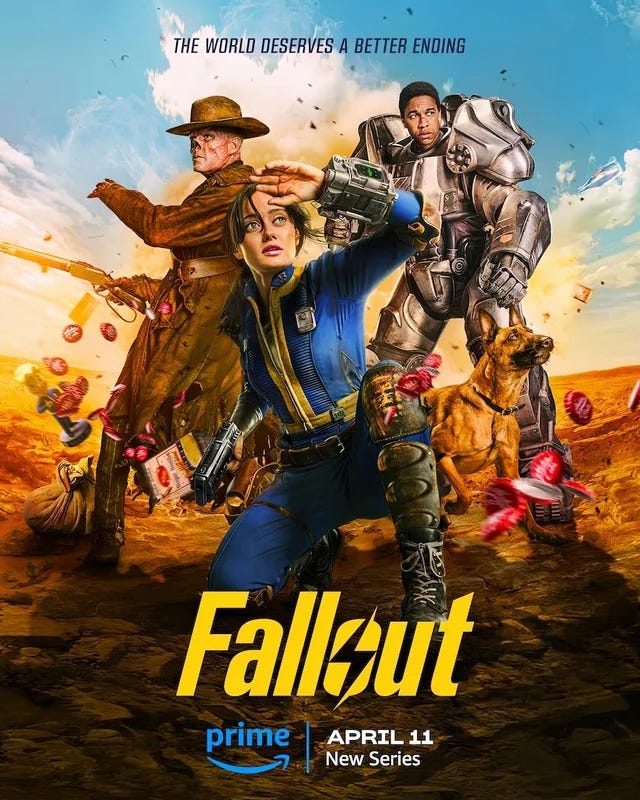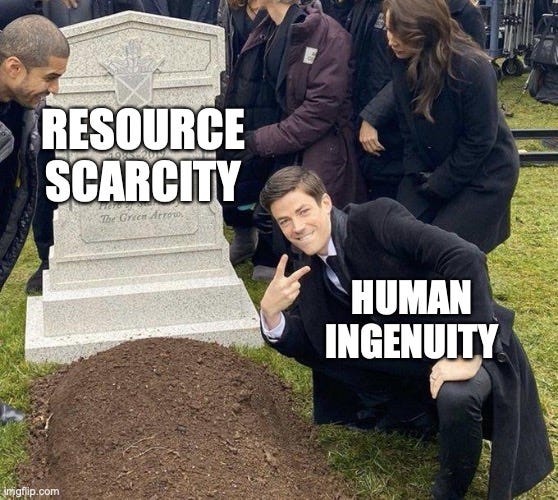How I Learned to Stop Worrying and Love Sci-Fi Dystopias
Introduction:
Science fiction is a genre known for pushing forward the boundaries of human creativity in technology and opening up new conceptions into what a future world could look like. Because of the desire for narrative conflict in our stories, science fiction, like all genres of storytelling, requires an antagonist. Science fiction I’ve seen generally finds part or the whole of this antagonist either within it’s fantastical technology, or it sets up the advanced technology as a contrast to a horrible external foe to the human race or specific social classes. In cases where the world for the average person is worse than today, we consider these worlds to fall into the class of dystopias.
Although humans crave a narrative antagonist, we also crave a resolution to the conflict of a story. In science fiction dystopias, this resolution is often achieved by either destroying the offending technology or finding a way to cope and live with the conflict from technology or external forces. Even though a resolution is obtained by the end of the story, the state of the human race is often worse than today’s real world, and the implicit message in many cases is that technology is harmful at worst or impotent at best in solving humanity's most pressing problems. Given the influence of popular culture on how people think about their everyday life, I believe these stories generate a sort of subconscious anti-human, anti-technology viewpoint that influences decisions up to the policy level. We can see it directly today with AI, where the potential dangers of AI are pulled right out of science fiction stories.
What I want to discuss in the rest of this piece is the exact opposite view. What I see when I watch these science fiction stories depicting dystopia are worlds that are so illogical that they border on impossibility. In almost all cases there exist extreme logical inconsistencies with the simultaneous existence of fantastical technology and relatively trivial problems that a world capable of these fantastical technologies could easily solve. In both science fiction and real life, people struggle to identify cross-applicability of knowledge and technology as well as how human incentives dictate the use of that technology. When one starts to look at the broader dystopian world with this in mind, we find the villain is nothing more than a paper tiger.
Failure to understand how human knowledge builds into a unified whole is perhaps the biggest reason why these worlds seem so shockingly inconsistent. Since the scientific revolution and our first good physical theories like those of Newton, scientific progress has built up a scaffold of knowledge that crosses every boundary of human knowledge today. Without an understanding of electromagnetism, boolean algebra, and a host of other mathematical and physical theories we could never have created computers. Despite this, none of these were developed with computers in mind. As we accumulate knowledge of how the world works, we can apply this knowledge to build new and better technology in other domains. Since humans are fundamentally problem solvers, we will always search for tools to solve our pressing problems no matter where these tools come from. Therefore, the assertion of the existence of an advanced technology necessarily asserts capabilities of both that technology and the broader world based on all the scientific knowledge that enabled its creation. This will be a key point in understanding why many of these worlds are logically inconsistent.
With the understanding that these stories are fictional and many contrivances are made so that the plot can occur, I am going to criticize several popular science fiction dystopias. We will look in each case at the broader state of the world, the nature of it’s dystopia, and the technology at humanity’s disposal. In doing so, I hope the reader comes away from future dystopian stories with a framework that reduces anxiety and allows the enjoyment of the art without taking for granted its assumptions. This process is how I learned to stop worrying and love sci-fi dystopias.
Interstellar
The World and Plot:
The world of Interstellar is set some decades into the future in a world that has in many ways been reduced to the past by catastrophe. In this world, a progressive plant disease called “blight” is slowly killing off all crops and plant life that humans rely on for food. There is allusion to military conflicts over food scarcity but by the present day in the movie, humanity has all but abandoned any pursuit that is not tied to farming. The protagonist Cooper, a former NASA pilot and engineer is now a farmer, albeit a highly advanced one with a fleet of large programmed farming vehicles. As the years pass by, the blight evolves to infect more species of crops and the devastation it leaves on plant life enables massive dust storms that become a regular fact of life. The dust is shown to actively harm people, with some characters developing respiratory issues. And if all of this wasn't bad enough, it is revealed that due to the death of plant life, the Earth will run out of oxygen and destroy humanity.
I’m not going to go too deep into the rest of the plot, but the solution that the remnants of NASA come up with is to send out astronauts through a wormhole to an area of space with several possible planets to resettle humanity onto. Though I have my critiques on the realism of that section of the movie I want to tackle the premise of the dystopia the writers have made. Below I outline the main “antagonist” of the movie as well as the technology that we see humanity has developed thus far. After that section, I’ll attempt to show how even this small set of advanced technologies as well as what we are already capable of today (this movie is set decades into the future) invalidates much of the conflict that we see in the movie.
The Dystopia:
Blight - a plant disease that is slowly killing off all crops and plant life and reducing the Earth’s oxygen to uninhabitable levels. The lack of food and oxygen is the primary driver of the conflict of the story.
The Technology:
Advanced, potentially general, artificial intelligence (ex: TARS, CASE)
Advanced spaceships and space faring technology (life support, advanced materials, etc)
Perfected cryo-sleep
Why This Wouldn’t Happen:
A good place to start when breaking down the conflict of this movie is with its root cause, the blight that is destroying crops. This presumably fungal disease has created many downstream problems including wars, reduced population, and diminishing oxygen in the atmosphere. Fungal diseases affecting crops are not new in today’s world where we use a mix of things like fungicides, genetic modifications, and crop rotation to fight it. However, let's assume that this fungal infection is unusually aggressive and fast mutating. Even with this assumption, we see that it is not necessarily THAT quick evolving since it's been around for decades in the movie and it seems to take at least a few years before it evolves such that it can jump to a new crop type.
What do humans have to defend against this? When thinking about a war between humans and biology, it's helpful to understand what we are fighting and what we are fighting with. A biological enemy like a fungus does not think, it is governed by evolution which has no direction in mind. Evolution is a process where random mutations occur and are trialed in an environment where the less advantageous genes cause their hosts to die or be outcompeted by rival genes. Though this sounds scary, it's actually an inherently slow process governed by random chance. Most mutations that happen have no effect one way or the other and a mutation that harms the host or the species is just as likely as one that benefits it. Contrast that with humanity’s own trial and error mechanism: knowledge creation. Though it also relies on testing ideas against reality to find which one works, it DOES have a direction in mind and is creative in a way evolution is not. This means that memetic evolution (evolution of ideas) is much much faster and more capable of solving a problem than genetic evolution.
The first line of defense in this war would be biological countermeasures using today's technology and theirs. Interstellar was created in 2014 so perhaps it is unfair to them that they didn't quite know about the work being done to develop CRISPR (a highly advanced gene editing technology). At the time of that movie, the predominant gene editing methodology was done either by selective breeding or recombinant DNA, both of which are orders of magnitude less advanced than CRISPR. CRISPR is significantly faster and cheaper than those traditional methods, meaning it is a biological superweapon that the writers of Interstellar never counted on.
This blindspot to technological development is a common theme and leads to pessimistic views of the future generally. It is much easier to imagine a problem than to creatively develop its solution. In this case, the story writers imagined a world where we were capable of perfected cryo-sleep, complete preservation of human cells including the brain, able to be frozen and thawed at will to withstand any aging for years during a journey through space. But a world that is capable of developing that technology is one that has so mastered biology that it is hard to comprehend. It requires understanding of starting and stopping life at will down to every metabolic and cellular pathway that could be effected. We are nowhere close to that level of biological mastery yet we already possess the technology required to defeat the enemy of blight – advanced gene editing.
Advanced gene-editing harnesses the power advantage that humans have over a natural pathogen like blight. That advantage is the speed of directed memetic evolution versus natural evolution. We see in the movie that the blight has been around for decades and evolves relatively slowly to new targets. This is because it has to undergo an undirected process relying on random chance that a beneficial mutation will occur that allows it to jump to a new species. Since this takes years at the least, humans are at a natural advantage. Even with today’s technology, which is woefully behind that of the world of Interstellar, humans have shown remarkable speed in developing biotechnology under pressure – notably developing an effective vaccine to a novel virus within 1 year during the covid pandemic. Given that a mastery of cryo-sleep technology displays such advanced knowledge of cellular biology, it is very plausible that humanity in this scenario would be able to very quickly out-engineer the blight. This could be: genetically modifying the crops, genetically modifying fungal predators (other fungus, viruses, bacteria), genetically modifying the blight itself, developing targeted fungicide or plant vaccines, or all of the above.
It's even worse than that however. Even taking as a premise that humanity cannot defeat the blight pathogen via genetic engineering, it possesses other extremely powerful tools in its tool belt. Namely, it is shown to possess extremely advanced science in: life support, materials, and artificial intelligence. These combine to make the case that humans can either create massive greenhouses that are fully automated, airgapped, and run by AGI they’ve already demonstrated they possess OR they can build massive interconnected life support domes for themselves to live within. This civilization is already capable of advanced space travel and the challenges of constructing these facilities to live in shouldn't be harder than the spaceships they've already demonstrated being able to build. I would be remiss in mentioning that the level of artificial intelligence they’ve demonstrably created in the movie would make it even more likely they could out-engineer the virus. Today’s far less advanced AI was vital for developing the covid vaccines as quickly as they were.
Lastly, the storywriters require a suspension of belief in the very principles of biology itself. Nature is, everyday, in a biological arms race between competitors, predators, and prey. A disease like blight would create extremely intense evolutionary pressure for all plant life domesticated and wild. It is very likely that a natural equilibrium would eventually occur especially amongst wild plant species which are much more genetically diverse than domesticated crops. This natural equilibrium within the wild plant species would likely solve the pressing problem of diminishing oxygen levels by itself. Additionally, the widespread prevalence of a fungus that is outcompeting existing fungi for resources would put evolutionary pressure on fungal species to potentially attack the blight causing fungus itself given that fungi are the primary predators of other fungi in nature.
WALL-E
The World and Plot:
The movie Wall-E made by Pixar is perhaps one of the most popular movies among my generation when alluding to potential dystopian futures. In the world of WALL-E, a mega corporation called Buy’N’Large came to dominate the world on Earth. Due to overproduction and consumption, the Earth becomes literally buried in garbage, all plant life goes extinct, and toxic air makes the earth uninhabitable by humans. The solution that the company comes up with is to move humans temporarily to luxurious space stations in orbit and leave the earth to be cleaned up by robots in the meantime. When this cleanup effort fails they make the decision to never return to Earth.
The movie is set 700 years after this decision and humans on the main space station of the story, the Axiom, have essentially been reduced to obese consumption machines floating around on anti-gravity hover chairs. They show no interest in anything that isn't mindless consumption and are kept alive by an extremely advanced city scale space station run by an equally extremely advanced artificial intelligence and robotics network. These robots handle everything to do with maintaining the vast space station and its inhabitants. The story follows two robots WALL-E and EVE as they fight the artificial intelligence that runs the ship and the apathy of its human inhabitants to get them to return to Earth.
As before, I am less interested in the plot as it proceeds than I am in the backstory that created the dystopia in the first place.
The Dystopia:
The Earth is over run with garbage and pollution forcing humans to abandon it and live in space stations
Humans are too apathetic and concerned with consumption to care about the environment
The Technology:
Artificial general intelligence (ex: EVE, WALL-E, and AUTO)
Artificial gravity
Autonomous manufacturing
Advanced energy systems – likely nuclear fusion and self-maintaining power systems
Advanced robotics, computing, and sensors
Advanced life support systems
Why this Wouldn’t Happen:
Once again, as is almost always the case with these stories, the writers have created a world of contradictions. We see a human race capable of unfathomably advanced technology by our standards get reduced to consumption slaves aimlessly circling an earth that has been destroyed environmentally. To understand exactly how implausible this outcome is, you have to fully understand the premises of the film. In the film, humans have amassed pollution that buries entire cities. They also imply that humans had already abandoned pursuits that weren't consumption based as that is the only way to explain how the world gets destroyed. However, it’s required that at the same time, humanity would have needed to be developing the extremely advanced technologies that they later rely on to escape Earth and survive in space. As we’ll see, that very technology would have saved Earth far before it needed to be evacuated.
Perhaps the single biggest unexplained premise is the Axiom’s power systems. To sustain all of the technology on board between the computing, robots, life support systems, artificial gravity, advanced propulsion, autonomous manufacturing, etc for 700 years, it by necessity needs power systems that far exceed what we can do today. Given the energy needs and time duration we see it is very likely the ship relies on nuclear fusion technology or energy sources like solar or fission that are autonomous and self-reparing. Energy is the bottleneck for doing just about anything advanced in the universe, so humanity possessing this level of energy generation changes everything.
Even today, the primary bottleneck for the feasibility of fighting effects of climate change like carbon removal or desalination is energy. A world with abundant and cheap energy can do anything that isn’t outlawed by the laws of physics. In the world of WALL-E, it implies that humans for whatever reason, at the same time they were developing extremely advanced energy systems, decided not to deploy that to help the environment around them. Even stopping here we know how implausible this is. It’s an economic fact that as countries get richer they decide to place more and more importance on the environment and the pollution they are generating. This relationship is modeled by the Environmental Kuznets Curve where developing countries grow economically alongside their pollution until pollution peaks at middle income. From there pollution levels decline.

The hypothesized reason for this is that low income countries are primarily concerned with immediate needs and do not have the wealth or luxury to focus on secondary needs like the environment. As a society gets richer and the basic needs are met, the population shifts its attention to issues secondary to immediate survival, and in this case, environmental safety. Since they are also wealthy societies, they can afford the technology and work required to do so. In the United States, as we grew wealthier post WWII, the population demanded the passage of environmental protection legislation like the Clean Air and Water Acts. As a result, today, the United States has comparable or better population weighted air quality than most of Europe and the OECD (proxy for developed, high income countries). We would hardly call the United States less capitalistic or consumerist than its European counterparts, in fact we would probably say that the United States stands out from the rest in this regard. The premise of the story that the environment gets worse as societies get richer completely and totally fails to be supported by any empirical data.
As a reader you probably can see the writing on the wall for the plausibility of the premises at this point. An extremely wealthy society that is essentially post-abundance, with limitless food and energy, and has built the capacity to manufacture a fleet of autonomous intelligent robots, has apparently stopped caring about whether trash is on the street or if their air is breathable. Everything we know about humans and economics points against this outcome. And everything we know about their technology points to these problems being easily solved. If they do have advanced fusion energy they already have limitless clean energy that is producing no pollution and can easily perform feats around carbon removal, desalination, and pollution clean up. If they have a fleet of extremely advanced robots and recycling capabilities (they were self-sustainably maintaining their space ship for 700 years) they could easily get rid of or repurpose the physical waste.
Like most dystopias, this one again points to a narrative the writers wanted to portray rather than a real possibility.
Fallout
The World and Plot:
The world of Fallout as described in the video game series and recent TV series by the same name is one which diverged from our current timeline around 1950. In this world, nuclear fission technology became widespread and transistors were never invented leading to bulky electronics relying on vacuum tubes. This creates a retro-atomic age aesthetic that seems almost stuck in what we see as the 1950’s of our timeline, except highly advanced.
In the Fallout world, the Earth’s energy supplies of oil and uranium powering their societies are rapidly dwindling and creating global conflict. This caused a world wide global war from 2052-2077 including wars between Europe and the Middle East, a Chinese invasion of Alaska, the annexation of Canada by the US, and a subsequent counter invasion of China. This culminated in what is called the “Great War” in 2077 where the US and China destroyed the world in a nuclear exchange.
In the time after diverging from our timeline in 1950, the world of Fallout rapidly advances in many technologies beyond what we are capable today. Essentially everything becomes powered by nuclear energy (likely fission first and then fusion) from appliances, cars, robots, and whole buildings/cities. In the official Fallout lore, fusion technology is not technically invented until 2066, or 11 years before the nuclear war. However, we see that fusion became remarkably widespread in that time, where pretty much everything is powered by it in day to day life by the time of the Great War.
In a demonstration of engineering prowess, the company Vault-Tec builds over 100 vaults across the US for people to live in in case of nuclear war. Most of the story lines explored in the Fallout Universe consist of someone from these vaults interacting with the irradiated wasteland, its inhabitants, and various warring factions vying for power. The US 200 years after the war is shown to be an inhospitable wasteland with mutated humans (termed ghouls), mutated animals, and undrinkable water. In the vacuum of power, powerful factions are constantly warring, nobody can keep the peace against bands of mercenaries and gangs, and the regular folk suffer.
The Dystopia:
The countries of the world are locked in furious competition for energy resources that leads to conventional and later devastating nuclear war
The resulting nuclear war has reduced humanity to a semi-primative state and the environment around them into a harsh wasteland for at least 200 years as shown in the various installments of the franchise
The Technology:
Nuclear fusion- including small scale fusion cores
Powering cars, appliances, and entire cities and buildings
Advanced autonomous robots
Artificial General Intelligence - ZAX supercomputers
Perfected Cryo Preservation
Incredibly advanced bio-nanotechnology (instant healing stimpaks)
Personal invisibility field generators
Why This Wouldn’t Happen:
This dystopia, while relying on cartoonishly evil companies that think nuclear war would be more profitable for them (absurd on its face), is mostly about resource constraints and is a common theme among dystopias. I think it's helpful though to understand that the context around the development of the Fallout franchise in the late 1990s consisted of a time of dramatic resource pessimism. Common predictions placed peak oil in the early 2000’s and uranium depletion by 2013-2015. Today’s estimates place our known conventional uranium reserves as capable of sustaining 100 more years of current demand with even more available in unconventional deposits and seawater. Additionally, Thorium, 3x as abundant as uranium, is a known replacement for uranium to supply nuclear fission and the Chinese recently developed a thorium reactor. But this still understates nuclear fission’s resource availability. Breeder reactor technology that has been around for many decades is capable of recycling spent fuel and is estimated to be capable of extending our supplies for another 30,000 years. Oil on the other hand has known reserves of 47 more years but has continually increased as we’ve developed new technology to access more than before. Hydraulic fracturing technology and horizontal drilling for example has drastically increased the supply of natural gas and shale oil previously thought inaccessible.
Why are resource pessimists consistently proven so wrong? The constant theme is that they underestimate or do not even try to estimate the growth of human knowledge and the effects of economics on human incentives. A resource is nothing more than a material that can be transformed into something else with the right knowledge. To paraphrase Naval Ravikant: “To a caveman, very little can be considered a resource”. For tens of thousands of years, uranium has sat inert in the Earth around us and was not considered a resource at all. It only became useful when we invented technology that could turn it into a resource. Shale oil and natural gas was not a resource until we invented technology to extract and use it. Assuming a world where humans do not invent solutions to their problems will always be fatal for predictions of the future. Thomas Malthus famously demonstrated this by predicting population collapse due to lack of farmland – completely missing the innovations that have allowed us to use even LESS farmland and feed over 7 billion more people than when Malthus warned of the population limits of humanity.
From an economics perspective, the incentives for different energy sources and new technology change as prices change. If uranium becomes much more expensive due to dwindling supply, it becomes more viable to invest in the technology required to extract it from seawater, switch to thorium, or use breeder reactors to recycle the fuel. As oil becomes more expensive, it becomes more viable to invest in finding new deposits, developing new extraction technology, or switch to other cheaper energy sources like solar. As other energy sources like solar, wind, nuclear, geothermal, etc come online, the demand for oil drops and the amount of time the reserves can be used is extended. When it comes to energy though, the only timeline relevant with regard to resources is the time it takes to develop nuclear fusion.
To the credit of the Fallout creators, they didn't completely ignore the growth of human knowledge. Miniaturized nuclear fusion was invented 11 years before the nuclear war. Nuclear fusion, the process by which stars generate energy, effectively provides infinite energy – billions of years worth just using known resources on Earth. Fallout’s timeline is pretty unrealistic though since in those 11 years miniaturized fusion became ubiquitous in society, powering pretty much everything. In real life, fusion would have been useful as large scale reactors far before we could develop a hand held fusion reactor like in Fallout. Today we have already demonstrated remarkable progress in nuclear fusion, achieving net energy gain for the first time in 2022 at the Lawrence Livermore National Laboratory in California. The promise of nuclear fusion has never been more real and we are nowhere near depleting the resources needed to sustain our current and projected lifestyles – especially as our switch to new technologies like solar reduce demand for resources like oil.
To wrap up, the Fallout universe completely ignores the reality of energy technology advances while at the same time proposing incredible advances in other fields. They develop instant healing stimpaks that can instantly heal all wounds, presumably through highly advanced nanotechnology. They develop miniaturized nuclear fusion/fission demonstrating extremely advanced engineering and physics prowess. They develop highly advanced robotics and artificial intelligence, perfected cryo preservation, invisibility field generators and more. All far more technically challenging than nuclear fusion or much simpler technologies like breeder reactors, uranium extraction from seawater, or thorium reactors. If I can imagine ways in which a society with those technologies can solve its problems with their own abilities, it is literally unbelievable that they couldn't when faced with nuclear war over the issue. Knowledge compounds and applies across fields. It is virtually impossible to make extremely advanced technology in one field without creating applicable knowledge to another.
Conclusion:
This piece was written to inject some much needed optimism into the culture around science fiction and technology broadly. It has become far too popular to be pessimistic about technology and humanity’s ability to solve our problems. In my opinion much of this can be blamed on the media, both popular and fictional, in emphasizing a pessimistic view of the future, technology, or human abilities. For my entire life I have been surrounded by a deeply ingrained view that the world is worse than it was and will only get worse still. For these people, science fiction dystopias allow them to visualize how this view is the correct one and that humans really are helplessly and inevitably creating their own destruction. Instead, the optimists have been quietly making the world better and better through nothing other than incentives and desires to solve problems. Yes, problems are inevitable, but they are also soluble. It just requires someone out there dedicated to creating the knowledge to solve them.
References:

